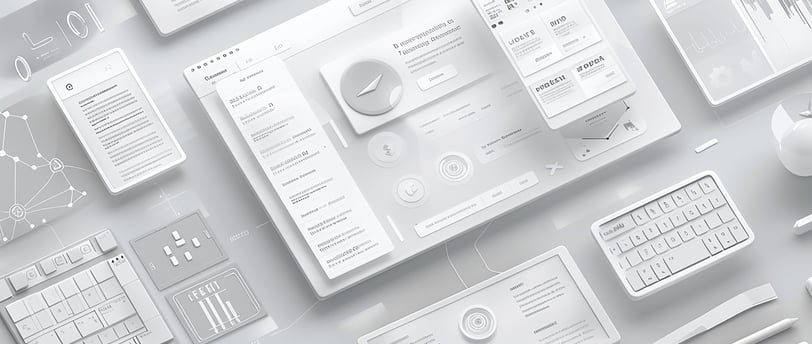Add your promotional text...
User Psychology in User Experience Design
Creating Meaningful Experiences.
UX|UI DESIGN
2/18/20253 min read


In our previous articles, we explored how empathy and personalization are fundamental pillars in designing exceptional user experiences. Today, we will delve deeper into the psychological foundations that support these principles. User psychology provides us with a lens through which we can understand how people think, feel, and behave when interacting with digital products. By applying psychological principles to UX design, we can create more intuitive, accessible, and satisfying experiences.
Key Concepts in User Psychology
Gestalt Theory
Gestalt theory teaches us how we perceive and organize visual information. By applying Gestalt principles such as proximity, similarity, and closure, we can create interfaces that are more intuitive and easier to navigate.
Behavioral Economics
This discipline studies how people make decisions in economic situations. Behavioral economics principles, such as the decoy effect and loss aversion, can be used to influence user behavior and drive conversions.
Cognitive Biases
These are mental shortcuts we use to simplify decision-making. Cognitive biases can affect how users interact with a digital product or service. It is essential to understand the most common cognitive biases to avoid design mistakes that could harm the user experience.
How to Apply User Psychology in UX Design
To apply user psychology in UX design, we can follow these steps:
User Research: Conduct interviews, surveys, and observations to understand user needs and expectations.
Persona Creation: Develop fictional user profiles to represent different segments of your audience.
Wireframing and Prototyping: Create low-fidelity prototypes to validate design ideas with users.
Usability Testing: Evaluate product usability through testing with real users.
The Importance of Emotions
User psychology focuses not only on cognition but also on emotions. Emotions play a fundamental role in decision-making and memory formation. By designing products that evoke positive emotions, we can create more memorable and satisfying experiences.
Conclusions
User psychology is a powerful tool for UX designers. By understanding how people think, feel, and behave, we can create digital products that are not only functional but also emotionally resonant. By applying user psychology principles, we can:
Improve usability: Make navigation and interaction with the product easier.
Increase user satisfaction: Create positive and memorable experiences.
Foster loyalty: Build lasting relationships with users.
Innovate: Develop products that adapt to users' evolving needs.
In summary, user psychology allows us to create digital products that not only solve problems but also inspire, motivate, and generate emotional connections.
Glossary
Archetype: A representative model or pattern of a group of people, used in marketing and design to better understand users.
Co-creation: A process in which users actively participate in designing products or services.
Cognitive Bias: A pattern of thinking or judgment that can lead to errors in perception or interpretation of information.
Empathy: The ability to understand and share another person's feelings.
Figure-Ground: The tendency to perceive elements as figures that stand out from a background.
Fitts’ Law: The time required to reach a target is inversely proportional to the target’s size and the distance to the cursor.
Gestalt Theory: A school of psychology that studies how we perceive and organize visual information.
Hick’s Law: The time a user takes to make a decision increases with the number of options.
Inclusive Design: Design that considers the needs and diversity of all users, without discrimination based on age, gender, disability, etc.
Personalization: The adaptation of a product or service to a user’s individual needs and preferences.
Proximity: The tendency to group nearby elements together.
Similarity: The tendency to group similar elements together.
Usability: The ease with which a user can learn and use a product.
User: A person who uses a product, system, or service.
User Experience (UX): The set of interactions and perceptions a user has with a product, system, or service.
Wireframe: A basic schematic of a digital interface.
Subscribe to our newsletter
Receive an alert every time new useful content is published for your personal and professional development


